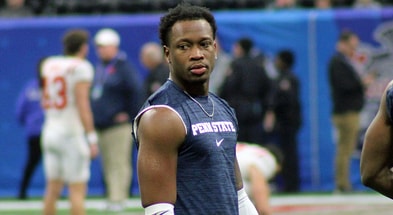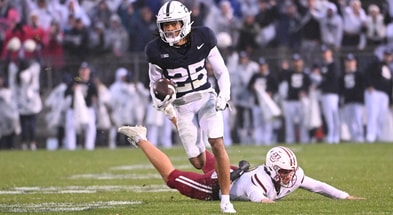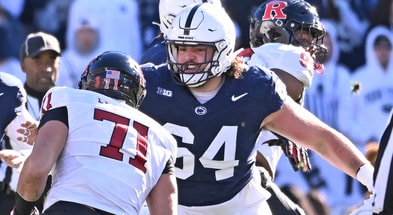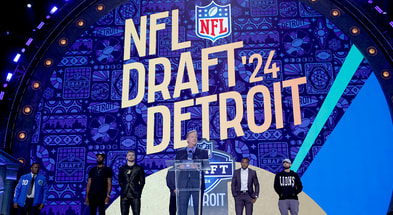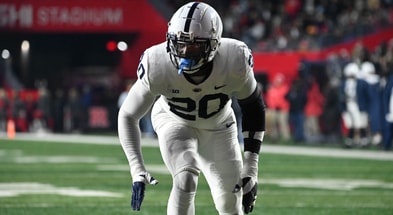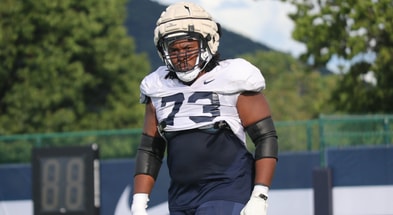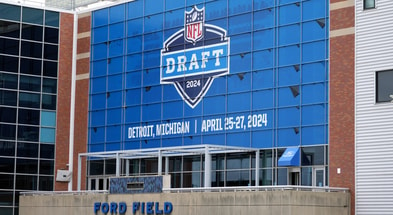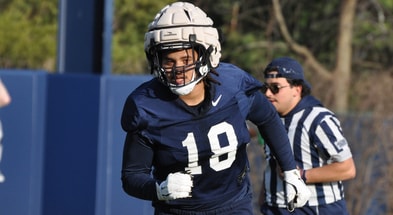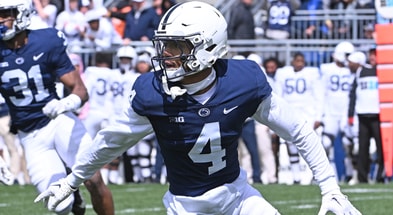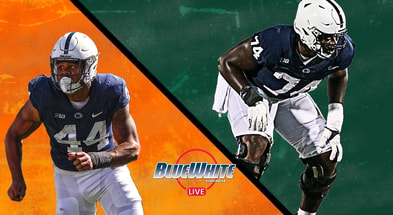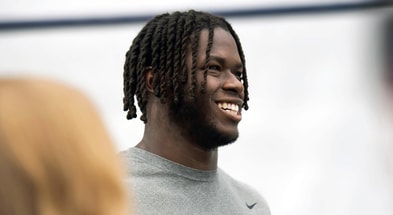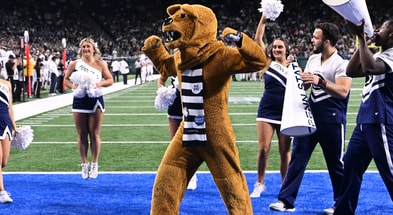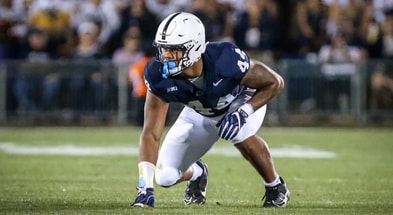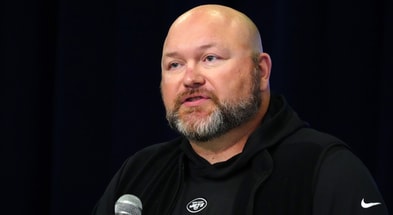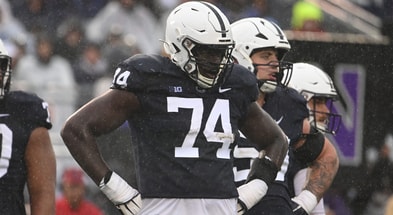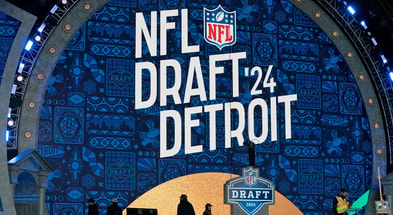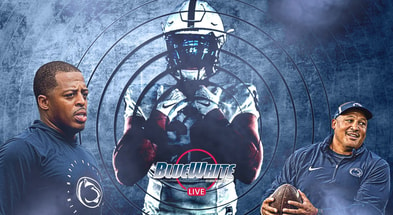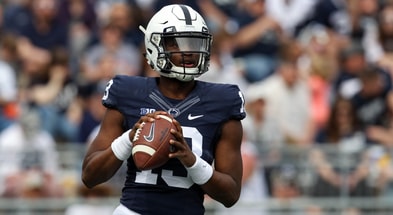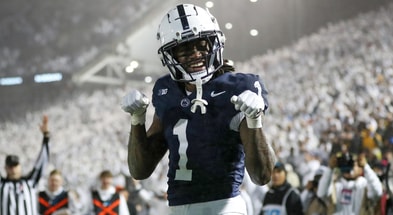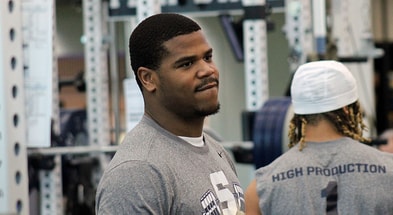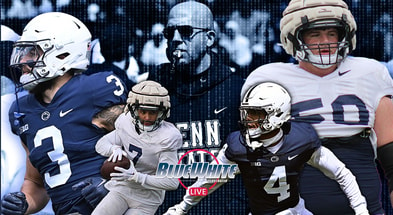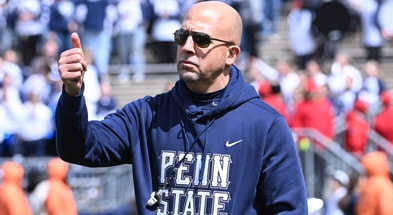Power ranking the Penn State offense ahead of spring football
The Penn State offense has plenty of talent, but putting all the pieces together has been elusive for the last several seasons. With new offensive coordinator Andy Kotelnicki joining the team this year, there’s hope that certain positions will play better this season with no or few changes in the personnel.
But what, exactly, is Kotelnicki working with? Let’s power rank the offensive positions to find out.
5) Penn State wide receivers remain the refrain of the 2024 offseason
Some of the numbers around the wide receiver room last season were staggering. For example, top Penn State wide receiver KeAndre Lambert-Smith caught 62.4% of his targets last season.
That was good for 20th among Big Ten receivers with starter-level targets.
Lambert-Smith was seventh with 85 targets last year, meaning that at its best, the passing game was inefficient. He got those 85 targets despite seeing only four in his final three games, meaning he was the passing offense for most of the season. The equally mercurial Dante Cephas was the next on the team with 41 targets, tied for 31st in the conference. Cephas is out and replaced by Julian Fleming, who tied Cephas with 41 targets last year.
What does all of this mean? Mentally insert your favorite shrugging GIF here. This position needs a mental reset this spring for all of us. Let’s see who stands out from a crowded field in a new offense.
4) Offensive Line
There’s reason for tangible optimism along the offensive line this upcoming season. The team has built quality depth and talent, especially at tackle, where Penn State is traditionally lean.
But replacing Olu Fashanu isn’t going to happen.
Drew Shelton has spent the past two seasons preparing to replace Fashanu but has been up-and-down in his progress as a pass-blocker. How he performs this spring will set the tone of optimism or concern for the group.
Anthony Donkoh has raced ahead of the young players and is the current media darling, thanks to his meteoric rise. The addition of former five-star target Nolan Rucci and fellow five-star J’ven Williams gives offensive line coach Phil Trautwein a quartet of viable candidates to play from a talent perspective. How viable are they from a realistic perspective? That gap will determine if the line climbs the rankings or falls to last place.
Beyond tackle, the biggest question will be if Nick Dawkins has a late-career blossoming and takes the center position as his own. If he doesn’t, the team has several quality options, but things fit better if Dawkins is the guy. Bringing Cooper Cousins along at a reasonable pace and keeping Vega Ioane at right guard are likely the best outcomes for the group.
3) Quarterback
The Penn State quarterback room is unquestionably in a better place than it was in 2021. The team has top talent, such as freshman top-ten quarterback in 2024, Ethan Grunkemeyer. The backup quarterback situation is so good that the team is looking for ways to get Beau Pribula on the field. Even the often-overlooked Jaxon Smolik was pleasantly surprised by his command of the offense last fall.
But the main question is how the offensive staff gets the most out of starting quarterback Drew Allar. Despite what some fans think, there’s plenty of reasons for optimism after last season. While he didn’t have the superstar season that some (yours truly) thought he could, that doesn’t mean it can’t happen.
The goal this year is to simplify the offense and take some of the mental processing off his plate. Getting him cleaner reads, thanks to some RPO, motion, and matchups, and the difference could be monumental.
2) Tight End
It’s very hard not to get excited about the Penn State tight end room, despite losing a probable Day Two NFL Draft pick in Theo Johnson. Tyler Warren returns as the veteran in the room, while Khalil Dinkins will have to fight off redshirt freshman Andrew Rappleyea for playing time. The team’s reputation of recruiting cyborg athletes who can run, jump, and catch is clear. This year, they also have the chance to block better.
The team’s recruiting prowess at the position has been so significant that it’s changed the team’s offensive dynamics over the past two seasons. While a return to more 11-personnel looks might be healthier for the offense, having 12-personnel locked and loaded is a great security blanket.
1) Running Back
Kotelnicki’s main task this year is to find a way to get more explosive plays out of Nick Singleton and Kaytron Allen. The dynamic offensive duo shared the brunt of the defensive focus last season. While the two were better overall players, the production and vibes, for the lack of a better term, were off.
But let’s not lump the two in together out of laziness. By the end of the season, Allen put up yardage totals and advanced metrics similar to his 2022 performance. He broke 37 tackles last year, fifth among Big Ten running backs. His 556 yards after contact were also fifth among that group.
Allen also generated more yardage on explosive runs with 11 carries of over 15 yards, compared to eight the year before.
The obvious and potentially unsustainable part of the equation was Nick Singleton’s 59.9% big-run percentage from 2022, which fell to 22.4% this past season. Much like Allar, Singleton had a good year by most metrics. His biggest crime was that he wasn’t special.
Also, like Allar, Kotelnicki needs to find a way to get Singleton cleaner running lanes that allow him to use his size and speed to rip off devastating runs. Singleton needs to adjust his approach, too, but he has grown and matured since stepping on campus as a freshman. The running backs will remain on top until the team features another part of the offense as the core unit.

